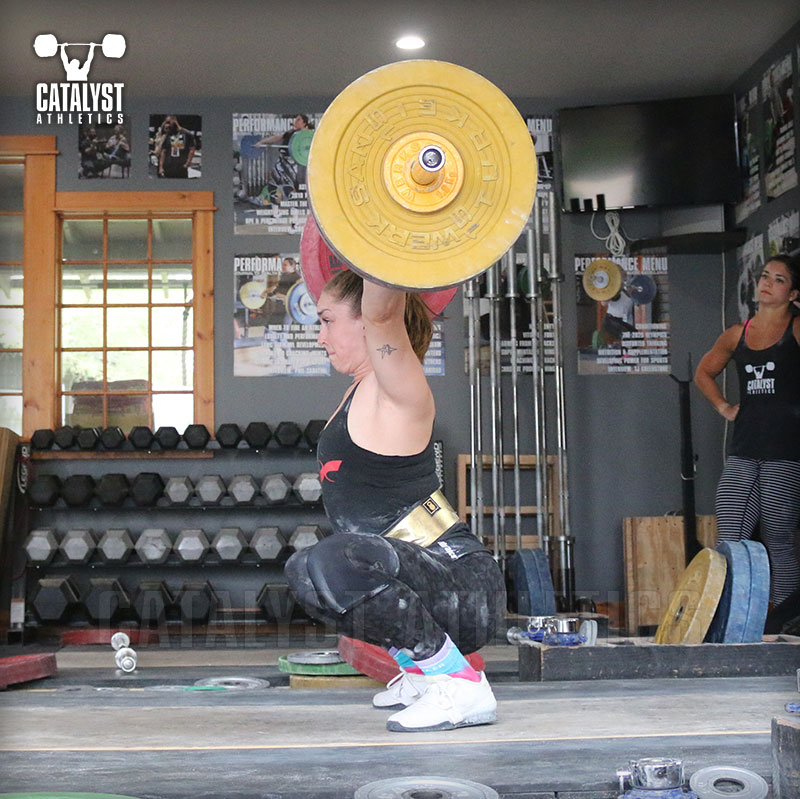Ask Greg: Issue 192

Arturo Asks: I fairly new to weightlifting (and training in general) and I'm having trouble having a good weightlifting journal that actually helps get useful information out of it. Do you have any advice or maybe a template of how to keep one? I want to have a good routine with it so by the time I stop being a noob I already know how to keep track of useful information. Thanks for all the help, you have by far the best information out there on the sport, keep up the good work.
Greg Says: I don’t know of any printed journals that are any good for weightlifting. Everyone’s training varies so much in content and amount, and the additional information they want to add ranges in type and amount extensively, so in fairness it’s impossible really create a good product for it.
I’d suggest just creating your own template to track exactly what you find most useful. You can break it up into three basic categories: the actual training itself, related objective data, and more subjective content like goals and self-evaluation.
For training, track the obvious: exercise, weight, reps and sets. You can include the percentage as well, which is helpful when looking back at past training. Make sure you note any misses or changes in prescriptions—you won’t remember those things a week from now, let alone months later.
You can also note things like bodyweight, how you slept, nutrition data, mobility work and other objective factors related to training that may affect it, and as a way to track and evaluate your lifestyle factors, consistency and progress. Again, this is helpful to be able to refer back to at later dates to determine what was working and what wasn’t.
Keep a separate section to track PRs. Note the exercise, weight, reps and date, and possibly a note on how it felt. Having this as a standalone section, such as in the last pages of a notebook, makes it easier to find a number you need.
Finally, consider keeping a journal, either in addition to your basic training journal or in combination with it, of the more subjective aspects of your training and life. This is the place to make notes each day about what your goals for the next workout are, what you did in today’s workout that you’re proud of, and what you need to do better next time. This keeps you engaged and focused and always training with clear intent rather than simply going through the motions.
Greg Says: I don’t know of any printed journals that are any good for weightlifting. Everyone’s training varies so much in content and amount, and the additional information they want to add ranges in type and amount extensively, so in fairness it’s impossible really create a good product for it.
I’d suggest just creating your own template to track exactly what you find most useful. You can break it up into three basic categories: the actual training itself, related objective data, and more subjective content like goals and self-evaluation.
For training, track the obvious: exercise, weight, reps and sets. You can include the percentage as well, which is helpful when looking back at past training. Make sure you note any misses or changes in prescriptions—you won’t remember those things a week from now, let alone months later.
You can also note things like bodyweight, how you slept, nutrition data, mobility work and other objective factors related to training that may affect it, and as a way to track and evaluate your lifestyle factors, consistency and progress. Again, this is helpful to be able to refer back to at later dates to determine what was working and what wasn’t.
Keep a separate section to track PRs. Note the exercise, weight, reps and date, and possibly a note on how it felt. Having this as a standalone section, such as in the last pages of a notebook, makes it easier to find a number you need.
Finally, consider keeping a journal, either in addition to your basic training journal or in combination with it, of the more subjective aspects of your training and life. This is the place to make notes each day about what your goals for the next workout are, what you did in today’s workout that you’re proud of, and what you need to do better next time. This keeps you engaged and focused and always training with clear intent rather than simply going through the motions.
| Greg Everett is the owner of Catalyst Athletics, publisher of The Performance Menu Journal and author of Olympic Weightlifting: A Complete Guide for Athletes & Coaches, Olympic Weightlifting for Sports, and The Portable Greg Everett, and is the writer, director, producer, editor, etc of the independent documentary American Weightlifting. Follow him on Facebook here. |
Search Articles
Article Categories
Sort by Author
Sort by Issue & Date
Article Categories
Sort by Author
Sort by Issue & Date

